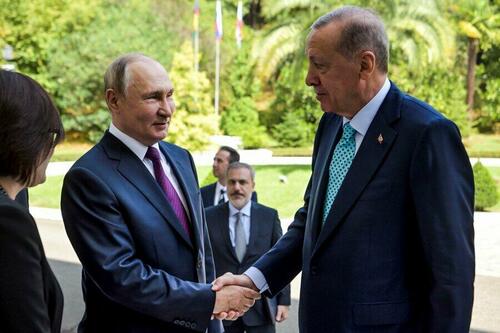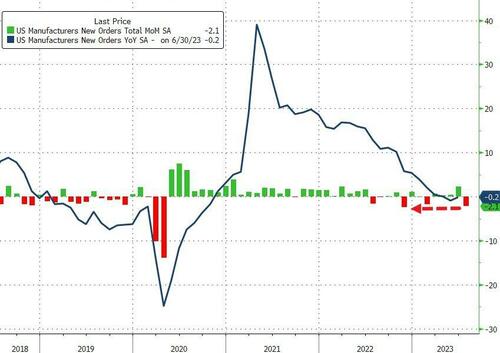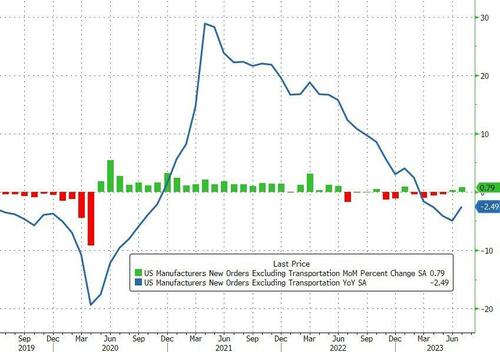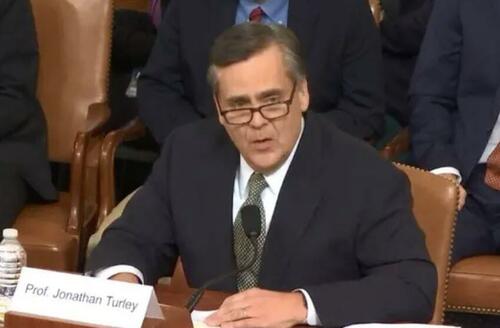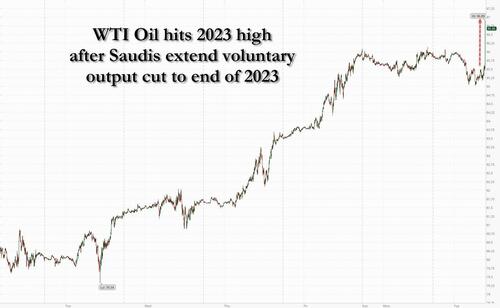This is one of many interesting free speech questions raised in Carter v. Transport Workers Union of Am. & Southwest Airlines Co. (N.D. Tex.). Let me discuss those questions in turn.
[1.] We begin with the employer’s punishment of employee speech that led to the case in the first place:
In 2017, a flock of Southwest flight attendants descended upon Washington, D.C. for the so-called “Women’s March” protesting President Donald J. Trump. Those flight attendants were also Local 556 members, and one—Audrey Stone—was the union’s president. During the march, they carried signage emblazoned with Southwest’s logo. Carter, a pro-life Christian, objected to the flight attendants’ purported representation of Local 556, Southwest, and, by extension, herself—especially given Planned Parenthood’s sponsorship of the protest. To voice her objection, Carter sent Stone several private Facebook messages, some of which contained videos of aborted babies. In one of those messages, Carter said, “[t]his is what you supported during your Paid Leave with others at the Women’s MARCH.”
Stone filed a complaint against Carter with Southwest. After a hearing, Southwest fired Carter, saying that when Carter messaged Stone, she was “identifiable as a Southwest Airlines Employee and represented our Company in a manner that is disparaging to Southwest Flight Attendants.”
Carter sued, alleging that (1) Local 556 had breached its duty of fair representation, (2) Southwest and Local 556 had retaliated against Carter for exercising her protected rights under the Railway Labor Act …, and (3) Southwest and Local 556 had discriminated against Carter for her religious beliefs and practices under Title VII. A jury found for Carter on each claim ….
Title VII of the Civil Rights Act, among other things, requires employers not to discriminate against employees because of the employees’ religious beliefs or religious practices. That means that the employers have to “reasonably accommodate” (so long as they can do so without “undue hardship”) employees’ religious behavior such as wearing religious headgear, taking their Sabbath off, and the like: Even when a generally applicable, religiously neutral work rule prohibits such behavior (for instance, by setting a dress code or requiring people to work weekends), the employees are entitled to exemptions from that work rule. But the same applies when the religious practice consists of speech; see PDF p. 7 of this article for some examples. The judge therefore allowed Carter’s Title VII case to go forward (a decision that eventually led to the jury verdict mentioned above):
Plaintiff alleges that her “religious beliefs require her to share with others that abortion is the taking of a human life.” According to Plaintiff, she “discovered that Local 556, the exclusive labor representative of all Southwest flight attendants, participated in the Women’s March and supported pro-abortion activities, using Southwest logos on their signs.” “In accordance with her religious beliefs and practices, [Plaintiff] posted videos to her personal Facebook page opposing abortion and sent President Stone videos opposing abortion and comments critical of Local 556’s support for abortion.” Plaintiff alleges that before her termination at her fact-finding meeting, she notified Southwest of her religious beliefs and explained why she sent the Facebook messages to Stone.
Plaintiff contends, “Southwest violated Title VII’s anti-discrimination provisions when the [C]ompany terminated [Plaintiff] for her religious beliefs and for engaging in the religious practice of sharing religious beliefs on abortion with the [U]nion president and on her personal Facebook page.” According to Plaintiff, “Title VII required Southwest’s policies to give way to the need for an accommodation of [Plaintiff’s] religious beliefs and practices.” Plaintiff further alleges that Southwest violated Title VII “by failing to attempt any accommodation to [Plaintiff’s] religious beliefs and practices, including when [Southwest] applied the Social Media Policies to [Plaintiff’s] communications on her personal Facebook page and to the [U]nion president.”
Accepting all well-pleaded facts as true and viewing them in the light most favorable to the Plaintiff, the Court finds that Plaintiff has stated a plausible Title VII claim for religious discrimination against Southwest. Plaintiff has established “more than a sheer possibility” that her religious beliefs and practice were a factor in Southwest’s decision to terminate her. Whether accommodating Plaintiff’s religious beliefs would have imposed an undue hardship on Southwest is a fact-intensive inquiry that may be addressed at the summary judgment stage or at trial….
This in effect means that religiously motivated speech—which likely also includes speech that stems from “moral or ethical beliefs as to what is right and wrong which are sincerely held with the strength of traditional religious views” (PDF p. 8)—is treated more favorably by the law than is other speech, such as political commentary that stems from pragmatic concerns. (I discuss a related issue as to RFRAs here.) One can argue that this itself violates the First Amendment. Or one can view this as a reason to narrow Title VII’s duty of religious accommodation, to exclude claims of protection for religious speech on moral or political matters, or to broaden Title VII to protect employee speech more broadly. But so far, the court’s analysis is well within the mainstream of currently existing Title VII law.
[2.] Now let’s turn to a speech compulsion imposed as a result on the employer. After the verdict, the judge issued an injunction ordering Southwest and the union not to violate Title VII’s religion-related provisions (more at PDF pp. 27-28 here on why it thought such a broad injunction was proper), and also required the defendants to notify employees about this:
Accordingly, the Court ORDERS Local 556 to post the jury’s verdict and the accompanying Final Judgment in conspicuous places at the union hall for a 60-day period and issue them electronically to all union members.
The Court likewise ORDERS Southwest to post the jury’s verdict and the accompanying Final Judgment on company bulletin boards for a 60-day period and issue them electronically to all Southwest flight attendants.
The Court ORDERS Southwest and Local 556 to inform Southwest flight attendants that, under Title VII, they may not discriminate against Southwest flight attendants for their religious practices and beliefs, including—but not limited to—those expressed on social media and those concerning abortion.
This is of course compelling the union and Southwest to speak, as a consequence of their adjudicated past violation of the law. In principle, one could argue that this should be seen as violating the First Amendment. But such orders are fairly common and are generally seen as constitutional, I believe, in labor law cases, and are sometimes issued in Title VII cases as well. Rightly or wrongly, employers are often required to post various sorts of information related to employment law, whether general information about employees’ rights or specific information about adjudicated violations by the employer.
[3.] Finally, we get to a compulsion to listen, imposed on Southwest’s lawyers. Southwest appealed the injunction, but expressly said it “does not seek a stay of the Court’s reinstatement order or its orders regarding injunctive relief.” It was thus bound by the injunction, and here’s what it wrote to its employees:

The judge concluded this was inconsistent with the injunction, because it said that “Southwest does not discriminate” rather than that Title VII provides that Southwest “may not discriminate”:
Southwest’s notice failed to mention Title VII, that the federal law known as Title VII contains a prohibition, and that that prohibition forbids Southwest from discriminating against flight attendants for their religious beliefs. Instead, Southwest’s notice communicated that there’s nothing to see here—aside from the Court’s bequeathing Southwest a badge of honor for not discriminating (which the Court did not do).
Southwest also wrote to its employees:

The judge concluded this was inconsistent with the injunction as well, in particular as to the passage that “We have established policies and guidelines that we must all adhere to,” coupled with the statement that Southwest viewed Carter’s speech as not adhering to those policies:
Not content with merely inverting the Court’s notice, Southwest also sent a memo to its flight attendants the same day, stating that its employees must abide by the types of policies over which Southwest fired Carter and that it believed its firing of Carter was justified because of those policies.
The judge went on to reason:
Southwest also argues that it has the right to speak, just like it did with the memo to flight attendants reminding them to abide by the policies over which it unlawfully fired Carter. The Court agrees that Southwest has the right to speak. But Southwest has long harbored the view—during trial, after the verdict, and (as evinced by its memo to flight attendants) even after the judgment—that its policies on civility trump federal laws like Title VII. And if Southwest continues to represent to its flight attendants that it may discriminate against them if they violate Southwest’s civility policies, Southwest will likely find itself (yet again) on the wrong side of the Court’s order. Southwest needs to understand, when communicating with its employees, that federal protections for religious freedom override any company civility policy….
Because Southwest’s right to speak when implementing the Court’s injunction ensures a continued partnership in the future, and Southwest’s speech and actions toward employees demonstrate a chronic failure to understand the role of federal protections for religious freedom, the Court concludes that training on religious freedom for three lawyers at Southwest the Court finds responsible … is the least restrictive means of achieving compliance with the Court’s order. The Alliance Defending Freedom (“ADF”) has conducted such training in the past, and the Court deems that appropriate here.
And just this past Thursday, the judge reaffirmed the order.
Now court-ordered training of lawyers whom the judge views as responsible for improper behavior in a case before the court is also not uncommon. Indeed, the Fifth Circuit (the federal court that supervises district courts in Texas) had recently authorized requiring a lawyer to “complete 3 hours of CLE courses in ethics” as a sanction, and other courts had done similar things.
But I don’t think it’s normal to require training to be done by a specific organization, and I think there is good reason to be skeptical of this, on First Amendment grounds. The ADF is indeed, as the judge noted, highly knowledgeable about religious freedom law, and may well be experienced in training:
ADF has won multiple Supreme Court cases in recent years on the topic of religious liberties, evidencing an understanding of religious liberties. And because ADF has agreed to conduct topical trainings in the past, ADF appears well-suited to train Southwest’s lawyers on a topic with which the lawyers evidently struggle.
But at the same time, ADF is an ideological organization, with its own commitments about how the law should be understood and enforced. It’s possible that any law firm, even a less overtly ideological one than ADF, would likewise have its own set of such commitments; but it seems particularly clear for ADF. And indeed I’m not aware of any established practice of courts requiring training by a particular firm: The cases that I’ve seen ordering training leave it to the target to choose among a set of eligible providers, for instance any Continuing Legal Education provider that provides training on particular topics.
Thus, for instance, say an employer was found to have discriminated based on, say, race or gender identity, and its lawyers were sanctioned for some noncompliance with the court’s orders as to such matters, noncompliance that the judge views as stemming from a lack of knowledge of the law. The lawyers might well be ordered to take further CLE courses on the relevant legal rules. But I wouldn’t expect them to be ordered to take such classes from, say, the ACLU or Lambda Legal.
As a general matter, the government can’t bar us from speaking, can’t force us to speak, and can’t bar us from listening. I think it likewise generlaly shouldn’t be able to force us to listen (though I appreciate that courts generally haven’t spoken expressly to that).
Of course, there are exceptions, when the government is managing various government-run institutions. Government employees’ speech can be restricted significantly on the job, and the employer can of course require them to listen to training. Colleges students are restricted in what they can say in class, and of course they can be required to read the class assignments, to listen to lecturers, and to answer homework questions or exam questions or in-class questions based on those assignments and lectures.
Lawyers likewise are limited in what they can say in the courtroom and in the litigation process more generally. They can be required to say certain things. And they can be required to listen to certain things, whether by their professional obligations (a lawyer who refuses to listen to a witness’s statement, because he finds it offensive, is committing malpractice) or as a sanction for violating court orders.
But it seems to me that the First Amendment requires that these mandates be limited to what’s really necessary, and not be made potentially unduly ideological. If a lawyer has to learn about some subject, the court may order that the lawyer do so. But it shouldn’t require that the lawyer learn about the subject from a particular ideological advocacy group, which is likely—just as a matter of human nature—to impress its teachings with a particular perspective.
I’m not saying this to fault ADF: I don’t think there’s anything wrong with ADF-provided training being influenced by ADF’s views, even while it also provides an accurate summary of the law. People who voluntary go to ADF-run training programs likely expect and want it to be colored by those views. I just think that it’s likely that there will be such influence, whether on training by ADF or the ACLU or Lambda Legal, especially when nothing in the court orders requires the trainers to take extraordinary steps to make sure that their training be as neutral as possible.
Now I should note (as the judge did, in rejecting the objection to the ADF, see n. 56) that Southwest focused on training by a particular group being “unprecedented” rather than a First Amendment violation (see PDF p. 24). Nonetheless, it seems to me that judges should craft their orders to avoid needless intrusions on people’s First Amendment rights, even in the absence of an objection. And I think that requiring lawyers to take training from particular ideological groups, left, right, or otherwise—or, I’d say, even from groups that claim to be nonideological—is indeed such a needless intrusion.
The post May a Judge Sanction Lawyers by Requiring Them to Get Remedial Training from a Particular Ideological Organization? appeared first on Reason.com.
from Latest https://ift.tt/e8AiI5d
via IFTTT
